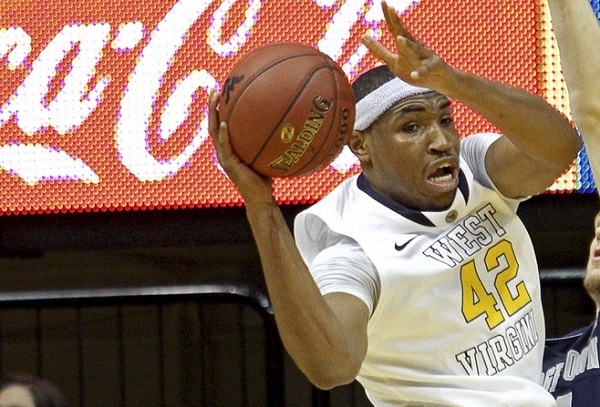What Can We Learn From NBA Draft Combine Measurements?
Posted by EJacoby on June 11th, 2012The top 60 prospects for the upcoming NBA Draft were invited to Chicago for the official NBA Draft Combine late last week, where players seek to impress the loads of pro scouts and executives in attendance in preparation for June 28. Before players even began competing in drills and scrimmages, they were first tested by the ‘tape’ in an extensive set of measurements. This year’s numbers were released on Friday, which include everything from height and weight to hand width and horizontal wingspan. But do these physical measurements really mean anything? Does the fact that Michael Kidd-Gilchrist measured a half-inch shorter than expected, or Jae Crowder’s hands are some of the widest of the group, have an impact on that player’s chances to succeed in the league? Adjusting to the elite size and speed of NBA competition is important for all incoming prospects, but a ball player is a ball player, regardless of his standing reach or hand size. History shows that some Combine measurements become useful in predicting future success while others bear no weight at all, making it a difficult data set to analyze.

Kevin Jones didn't measure out well at the Combine; does this mean anything for his NBA potential? (AP Photo/D. Smith)
This year’s athletic testing results (bench press, agility drill, vertical jump, etc.) are not yet released, so we’ll just take a look at the player measurements and what they mean. Some notable numbers from this year include Meyers Leonard’s massive height without shoes (6’11.75”), Andre Drummond’s ridiculous wingspan (7’6.25”), John Henson’s skyscraping standing reach (9’3.5”), Kevin Jones’ excessive body fat (11.2%), and Andrew Nicholson’s enormous hands (10” long, 10.75” wide). But didn’t we already know these things? We knew that Drummond was a freakish physical specimen, and Henson’s intrigue as a prospect stems from his elite length. We know Leonard is huge and Jones doesn’t look like much of an athlete. But that becomes the dilemma – should scouts put more stock in Kevin Jones’ physical measurements, or his versatile skill set that’s been on display at West Virginia for four years? The hard part is determining to what extent, if any, a player’s body will impact his ability to contribute in the NBA.
Historical results support both viewpoints — that some measurements were useful while others were completely meaningless. Back in 2006, teams that relied heavily on measurements were duped in two notable scenarios. Patrick O’Bryant was coming off a Cinderella run to the Sweet Sixteen for Bradley that opened a number of eyes. He followed that up by posting awesome Combine measurements, including a 7’7.75” wingspan that ranked the second-longest of any player. O’Bryant was selected with the ninth overall pick, where he promptly became one of the league’s most memorable busts. Meanwhile, Paul Millsap measured in shorter than expected for a forward (6’6.25”) and with a bit too much body fat (9.7%). General managers overlooked the fact that he led the NCAA in rebounding for three consecutive seasons as an extremely productive player at Louisiana Tech, and his unimpressive physical traits helped push him to the mid-second round. Six years later, O’Bryant is playing in the Puerto Rican league while Millsap is a borderline NBA All-Star who averaged 16.6 points and 8.8 rebounds this past season, his sixth productive year for the Utah Jazz.
But in other instances, measurements have offered some useful insight into how a player might thrive or struggle against NBA competition. In 2009, Taj Gibson wasn’t getting much pub as a prospect after an up-and-down career at USC. But he shined at the Combine, recording the second-best wingspan of all players and an impressive body fat percentage (6.6%) for a power forward. He slid up into the first round at #26 overall, made the All-Rookie team and is now part of the USA Select Team for the 2012 Olympics after his third NBA season. He’s been a valuable reserve for the league’s best defensive team (Chicago Bulls) with strong rebounding rates and defensive metrics that perhaps stem from his impressive physical profile. That same draft year, Luke Harangody fell out of the first round despite being Big East Player of the Year and a three-time second team All-American because he didn’t measure out with ideal traits for an NBA forward. With 11.2% body fat, short arms (6’9.75”), and barely cracking 6’6” tall without shoes, scouts feared for ‘Gody against pro defenders. And they have been correct so far, as he spent the majority of last season in the D-League.
Official Combine measurements go back all the way to 2000 and are accessible through databases like this one at DraftExpress, so there’s much more data to analyze besides just recounting the narratives of the four players we described. One thing remains clear, thought, which is that basketball is much more of an art than a science. It takes a keen scouting eye to understand how the combination of a player’s physical traits, on-court efficiency, athletic pedigree, and ‘upside’ potential will add up in the NBA. Combine measurements are just one piece of the puzzle and one more way for franchises to compare prospects in search of finding the best ball player for their teams.
Evan Jacoby is a regular contributor for RTC. You can find him @evanjacoby on Twitter.










































